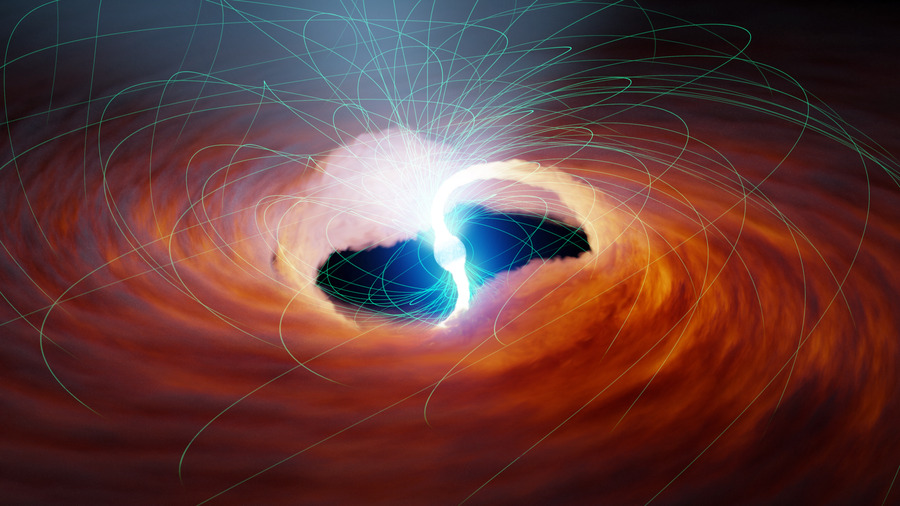
 Credit: NASA/JPL-Caltech/R. Hurt (IPAC)
Credit: NASA/JPL-Caltech/R. Hurt (IPAC)
Why So Luminous?
Gravitational accretion of nearby matter (often from a companion star) onto a collapsed object (a white dwarf star, a neutron star or black hole) produces some of the most luminous X-ray emission known in the Universe. There should be a limit, though, to how much matter these objects can accrete and how luminous they can be. As more material is accreted, the greater the X-ray emission becomes, and eventually the pressure of the X-ray photons on the infalling material will become so great that further accretion is impossible. The luminosity at which this happens is called the "Eddington Limit", in honor of Arthur Eddington, the famed astronomer who first considered this process. But some strange objects in the cosmos seem to wildly exceed this limit. These mysterious objects, called Ultra-luminous X-ray sources (ULXs for short) are typically more than 100 times more luminous than the typical Eddington Luminosity limit for a neutron star or the typical X-ray emitting stellar-mass black hole. How can they achieve this extraordinary X-ray power? One explanation could be that these objects are surprisingly massive black holes (sometimes called Intermediate Mass Black Holes, or IMBHs) whose gravitational attraction is strong enough to overpower the enormous X-ray radiation pressure that's observed. But observations with NASA's Nuclear Spectroscopic Telescope Array (or NuSTAR) about a decade ago indicated that some ULXs show periodic X-ray intensity variations, which seems to indicate that these sources actually harbor neutron stars. Now a new study using eight years of NuSTAR observations of one of these sources provides new information which may help solve the puzzle. Analysis of NuSTAR observations of
the ULX M82 X-2 (an X-ray binary in the galaxy Messier 82, and the first ULX for which an X-ray pulse period was found)
has attempted an independent measure of the accretion rate by measuring the orbital period change in this system. Transfer of matter in a binary system alters the distribution of mass between the two stars, which changes how long it takes the two stars to orbit each other. This new study found a surprisingly large change in orbital period, which in turn suggests an extraordinarily large accretion rate, greatly exceeding the Eddington Limit. One explanation is that
the neutron star's powerful magnetic fields could in principle channel the accreting matter into narrow columns,
which would reduce the force of the X-ray pressure on the inflowing matter and allow the neutron star to "over-eat". The image above is an illustration of this idea. It represents accretion onto the neutron star in M82 X-2 from a disk of in-spiraling matter, with the tangled lines of magnetic force channeling the accretion into two narrow columns, one above and one below the neutron star.
Published: July 17, 2023
<
HEA Dictionary ● Archive
● Search HEAPOW
● Other Languages
● HEAPOW on Facebook
● Download all Images
● Education ● HEAD
>

Each week the HEASARC
brings you new, exciting and beautiful images from X-ray and Gamma ray
astronomy. Check back each week and be sure to check out the HEAPOW archive!
Page Author: Dr. Michael F. Corcoran
Last modified Monday, 26-Feb-2024 17:22:31 EST


